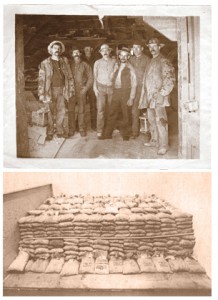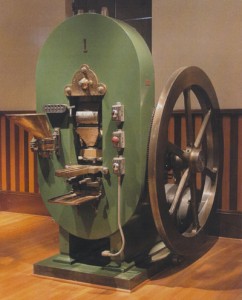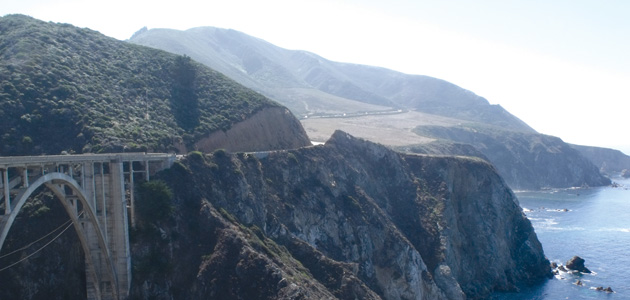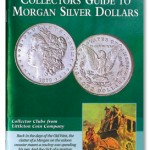Short-lived Carson City Mint
Last updated:Visiting America’s short-lived frontier mint in Carson City, NV

The former Carson City Mint.
Taking a vacation trip through Nevada and California recently, I visited the historic former Carson City Mint in the capital city of Nevada. Though a small, short-lived facility that struck U.S. coins only from 1870-1893, the Carson City Mint is huge in numismatic lore and legend. And coins with the “CC” mint mark are in great demand for low mintages, scarcity, and prominence in Wild West history! Especially desirable are “CC” Morgan silver dollars, including Uncirculated “CC” dollars stored in Treasury vaults for decades, discovered during the 1960s, and sold to the public in special government holders.
Born of the fabulous Comstock Lode

Top: Comstock miners; Bottom: Comstock Lode – Hoard of Morgans in bags.
Carson City was founded in 1858 without much reason for being. But the incredibly rich Comstock Lode was discovered on nearby Mount Davidson a year later, and the population of the area soon exploded. Most of the silver and gold riches from the Comstock Lode were transported by wagon or stagecoach over the Sierra Nevada Mountains to the San Francisco Mint during the 1860s – a risky venture as armed bandits lay in wait for the bullion shipments. So Nevada mine owners petitioned Congress for a branch U.S. mint, and the Carson City facility began operations in 1870. Only silver and gold U.S. coins were produced, until 1893 when the Comstock Lode was giving out. Any hopes that Carson City would again produce U.S. coins were soon dashed by a high-profile trial that sent three former mint employees to prison for skimming off naturally occurring gold in silver ore during the refining process. Just another chapter in Carson City’s Wild West history! (Read more about CC mint coins and dies.)

Courtesy Nevada State Museum, Carson City
The Renaissance Revival-style mint building, which now houses the Nevada State Museum, is a classic Old West stone structure like you’d expect to see in a “western” movie. The museum features numerous exhibits and displays tracing Nevada’s natural history and mining legacy, but you can also see the mint’s old Coin Press No. 1 which struck “CC” coins throughout the facility’s years of operation. The basement of the former mint is a re-creation of a Comstock Lode silver mine and illustrates major innovations developed at the Comstock mines. Square set timbering inspired by honeycombs utilized stackable heavy timber-frame “cubes” about 6′ x 6′ x 6′ to support large underground mining cavities. And the Washoe process was devised to extract silver from Comstock Lode ore using mercury and other chemicals.
Other historic sites and drives along the way…

Traveling on California’s spectacular Pacific Coast Highway

Learn more about the Comstock Lode and Wild West Morgans in Littleton’s free Collectors Guide to Morgan Silver Dollars.
In continuing my western journey, I visited other historical sites including Sutter’s Mill where the great California Gold Rush began, and Hearst Castle in San Simeon, CA which was the extraordinary estate of newspaper magnate William Randolph Hearst. I also experienced numerous spectacular roadways – over the Carson Range of the Sierra Nevada Mountains, around the Lake Tahoe Scenic Drive, down the breathtaking Pacific Coast Highway through Big Sur, and up dramatic Generals Highway in Sequoia National Park which rapidly ascends over 5,000 feet of very steep terrain with 10-mph switchbacks to the legendary Giant Forest.
I was in awe of where they’ve managed to build roads in California – true engineering feats! I also kept marveling at what it must have been like to cross that terrain and cover those distances in the Old West, by covered wagon, on horseback or on foot. But I imagine time was perceived differently in those bygone days and eras!
Do you have some favorite western historical sites or scenic drives? Please feel free to share them with other readers.



